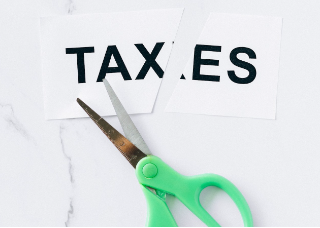How to Minimize Taxes in Divorce Without the Alimony Deduction
Author: Miod & Company
Date: December 1, 2021
Category: Family Law
Average Time Reading: 4 minutes

Prior to 2019, divorced couples in different tax brackets could save money with an alimony deduction. This allowed the alimony payor to deduct their spousal support payments on their taxes, while the recipient counted the payments among their taxable income.
Effective January 1, 2019, however, alimony is no longer tax-deductible and the recipient no longer pays taxes on the payments. This results in the payor paying out more taxes and less alimony.
So what are some strategies to minimize taxes without the alimony deduction?
401(k)s and IRAs
In some circumstances, transferring “alimony” to the lower-income party’s retirement accounts may be a viable alternative. This effectively reverts the alimony taxes to what they were prior to 2019 since the payor does not pay taxes on the deposits, but the recipient must pay taxes on what they withdraw.
The recipient also gets the added benefit of security; not only do they get more money overall, but they also have increased control over the asset. The recipient owns the money no matter what, unlike traditional alimony payments which are subject to more restrictions.
However, it’s important to understand that withdrawing from 401(k)s and IRAs early usually comes with a 10% fee. If the recipient is under 59.5 years old, then there are various nuances to withdrawal without incurring the fee.
Charitable Remainder Trusts
The parties can achieve a similar result by setting up a Charitable Remainder Trust (CRT). With a CRT funding at least a portion of the alimony, the payor can both avoid taxes and contribute to a cause of their choice.
With relatively-low basis investments, the higher-income party contributes assets to the CRT and specifies the lower-income party as the beneficiary. The beneficiary then gets the annual income the trust generates. Whatever’s left over at the end of the predetermined payment period gets donated to the payor’s designated charity.
Strategic Investment Distribution
For couples with large stock market gains, mutual funds, or real estate, transferring some of those assets can offset alimony. If the payor transfers holdings with large gains to the recipient, this one-time payout will both cut down on taxes and remove the tension of ongoing alimony payments.
It’s important to note, however, that there are certain situations wherein alimony payments are more secure than investment holdings. For example, these holdings are dischargeable during bankruptcy.
Conclusion
No matter which method you chose, it’s worth noting these methods won’t work for people who are in the same high-income tax bracket. To determine which method will work best for you, you’ll need the help of a CPA

Paul White joins Miod & Company
Author: Miod & CompanyDate: June 15, 2022Category: TaxAverage Time Reading: 4 minutesIt’s not a common occurrence for a business to bring on a member of a rival firm to its staff. It’s even less likely to bring on a founder of a rival firm. Paul White joining Miod...

Find out How to Safeguard Pensions in Divorce
Pensions in divorce can be a complex and stressful issue to navigate during a divorce proceeding. The fate of your retirement savings or pension plan may be one of the many concerns you have during your divorce proceeding. If you've been able to save money through...
Miod and Company
Contact Us
Address: 27200 Tourney Rd #290 Valencia, CA 91355
Phone: (818) 898 9911
Email: contact@miod-cpa.com